
I recently read an article about a cocker spaniel being burned to death in a cage dryer. I was appalled, heart broken, and angry.....but not at all surprised. The pictures of the sweet doe-eyed girl were gruesome to say the least.
The pet grooming industry is unregulated. Other than industry associations, there is really no one to set the bar. When you visit a groomer, your pet is potentially at the mercy of their morals, ethics, standard of cleanliness and humane treatment, or those of the business’ owner. If you take your pet to a chain store that has grooming, your pet’s experience will be up to the manager that oversees that department. Basically whoever is in charge. This is one of the reasons I never recommend a grooming client allow their pet to be groomed in someone’s home without being there to supervise. Even the lone groomer that works in a reputable vet clinic can fall pry to the cage-drying trap. As an experienced salon owner and expert animal care provider that is very in charge, I tend to set the bar pretty high. I gave up cage drying almost 17 years ago, when I opened my own salon, because it is inherently dangerous and frankly, doesn’t do the job well. Not even close, even in a pinch.
In this particular story, my opinion (with limited knowledge of the groomer or dog) is that the groomer was completely at fault and through her negligence caused that animal to suffer. She caused emotional pain to a family that loved the little dog because the dog had to be mercifully euthanized.
The dog described in the article I read (see link below) was a Cocker Spaniel. Cockers have more hairs per square inch than any other breed. So when I write about long hair or dense coats, cockers are the cream of the crop. To attempt to fully cage dry a cocker spaniel safely is a hairy business, and when you employ homemade solutions to economic problems, you’ll fry someone’s pet. Plain and simple. In the following report I discuss airflow, velocity and heat in caging systems and pet blow dryers. The groomer in this case, falsely assumed that because no dog had been hurt, no dog could be hurt. I’ve been a groomer more than half my life, 23 years and I will never advocate the dangerous practice of cage drying.
Read on to find out why.
What is cage drying?
When a dog is professionally groomed a pet must complete the preparatory stages of the groom before being washed or dried. Only after completing a rough draft of the groom (pets are thoroughly brushed, matted hair removed, and haircuts get pre-clipped), is the animal washed with pet shampoo, rinsed, toweled, and blown dry with a heated blower. There are typically 3 ways to blow a pet dry: hand drying, cage drying, and fan drying.
Cage drying is just what it sounds like. Pets are placed in a cage and a heated blower dries them in it. Cage drying doesn’t require much effort on the part of the professional, other than getting the pet to move around once in a while. This time is often utilized to take a break or bathe another pet.
Hand drying is done by a groomer or groomer’s assistant wherein the pet is on a table, with a safety loop. The professional is an active part of blowing the dog dry whether using a stand dryer (medium volume/low velocity/ high heat) or hosed tank type dryer (high velocity that creates it’s own heat).
Fan drying is similar to cage drying only with no heat, room temperature air only. Fans and floor dryers provide cubic feet of airflow with no heat or real velocity. Most groomers that use fan drying don’t actually do it to DRY the pet, but to keep air movement around the pet between the bath and hand drying.
Why cage dry dogs and cats?
The ONLY 2 reasons to cage dry a pet is, if you can’t touch it without being bitten/injured, or the pet is so freaked out he’ll surely have a heart attack or hang himself before letting you do it. And conditionally it must be too cold to fan dry it. In that case, how did the pet even get bathed? Good job, and good luck with that. Cage drying does a horrible job. The pet isn’t thoroughly dried unless the cage has been turned into a hot wind tunnel, or the heat is so high that they bake! Many times damp spots are left even when the dog is so hot that it could endure heat stroke. Curly dogs are not fluffy and pretty, they are a bag of curls that are impossible to cut evenly. Dogs that shed do not get the dead hair blown out of the coat. So~ they might be clean, but they will shed worse after that visit with the groomer than before. So why do so many groomers still do it? The biggest reasons are to save time and money (much like other industries, in grooming, time IS money.) If you cage dry the pet, you can do something else in the mean time. If you cage dry it, you don’t have to pay someone to do it. That’s it. I chalk it up to being lazy, taking no pride in their work, not having the good sense to know how dangerous it is, and/or being bad at managing money. Sometimes it’s just a young, inexperienced groomer that thinks he is an expert after only couple of years of grooming.
What kind of equipment is used to cage dry dogs and cats?
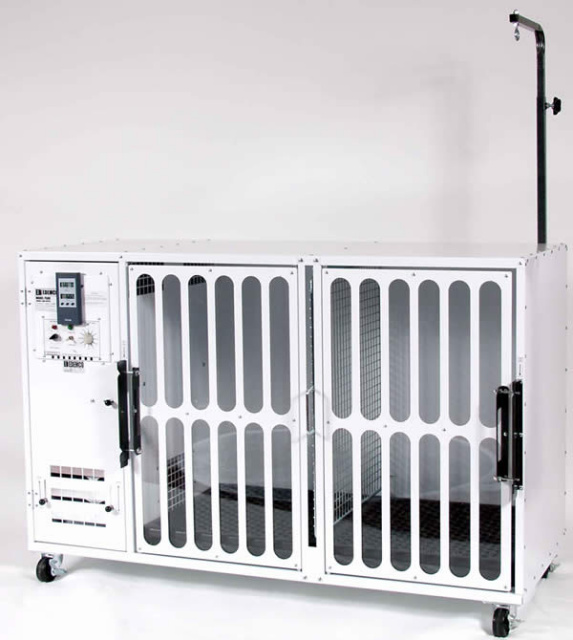
Heated air should not have the ability to build up in the cage, so openly vented doors are a must.Automatic shut offs are a safety precaution that is paramount in ensuring that a pet won’t overheat. Even with automatic shut offs, the pet should be closely watched 100% of the time. Longer coats need more cubic feet per minute of airflow. Dense coats need more cubic feet per minute, at a higher velocity, with more heat. In a commercially constructed cage dryer that has been built with safety in mind. A Labrador retriever can dry in 15 minutes. A beagle or pug? 10 minutes or less. That’s barely enough time to take a break or wash another dog. You should not leave the pet in a cage dryer unattended FOR ANY REASON, even if it’s off. Cage dryers are not cages. And cages with pets in them are not storage shelves for dryers that are not in use.
Cage drying often becomes extremely dangerous when a groomer tries to duplicate the pictured state of the art dryer with their homemade version. Groomers are infamous for not wanting to spend their hard earned money on good equipment and attempting to make a “cheaper” version. I don’t know how many homemade Hydro surges® there are out there, made from a sump pump… or wooden cage banks I’ve seen, yuck!
CAGES
Groomers should use the best that they can afford when it comes to cages. Cages can be costly and the less expensive they are, the more easily damaged or unsanitary they can be.
Modular- these types of cages are made to be assembled into “banks”. They are usually metal or fiberglass; they are easy to clean, and the pets can’t see each other (That is a huge plus for the pet’s experience! Seeing other pets can lead to more dogs barking, stress for cats wondering if they will be eaten before being tortured with the water sprayer, dogs hiking and peeing on each other, fighting through the bars, cage fright and more). They generally have doors on the front that pet’s can see out of and that can be easily removed for cleaning. Unless the bottoms have a comfortable grated floor, the doors will be the only source of airflow. Modular units are made of durable materials that will last for a long time. (This is what I have.) :)
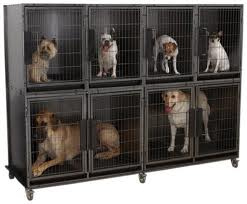
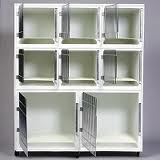
Wire Cages- If you can’t get the nice, big modular units, or want to be more mobile wire cage banks are the next best thing. They 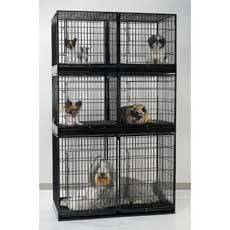 usually include a plastic or metal pan that can be removed for cleaning and disassembly. They are harder to keep clean, as pets often urinate, slobber/lick the bars and get just about every bodily fluid/solid that can come from an animal on them. Many groomers don’t clean the wires, only the pans. Let me tell you, wire cages are a huge pain in the butt to scrub. You basically need to power wash them outside. Individual wire cages come in a multitude of sizes and designs with doors on the ends, tops, or sides; some have multiple doors or tops on them that hinge open (like a toddler play yard). Individual wire cages can be stacked to save space.
usually include a plastic or metal pan that can be removed for cleaning and disassembly. They are harder to keep clean, as pets often urinate, slobber/lick the bars and get just about every bodily fluid/solid that can come from an animal on them. Many groomers don’t clean the wires, only the pans. Let me tell you, wire cages are a huge pain in the butt to scrub. You basically need to power wash them outside. Individual wire cages come in a multitude of sizes and designs with doors on the ends, tops, or sides; some have multiple doors or tops on them that hinge open (like a toddler play yard). Individual wire cages can be stacked to save space.
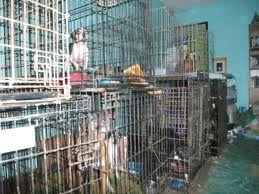
Often these kinds of cages are acquired one at a time thus groomers often have a variety of sizes that don’t quite fit together neatly. Groomers often use zip-ties to secure wire cages together into makeshift banks. These types of homemade banks are virtually impossible to clean.
Wire cages allow airflow and eyesight from all sides. 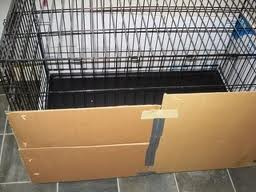 Often, when using these types of cages, towels, blankets, wooden boards, cardboard boxes, and various materials are used to block the view some pets have of other animals in the salon. It is usually a case-by-case method of trying to keep the pets comfortable in the cages and getting barkers to quiet down some. Some of these same materials are employed to block airflow as well, to avoid a dryer not drying a pet because the air is blowing by it, not on it. Wire cages do not stand up to long-term commercial use. Unless kept impeccably clean, they will rust and/or become germ infested bacterial breeding grounds. Yelch! (Out of the 70-75 cages I have, 5 or so are this style. We have one stack of three, none side by side; and a couple that are broken down and stored for use when we run out of space once or twice a year.)
Often, when using these types of cages, towels, blankets, wooden boards, cardboard boxes, and various materials are used to block the view some pets have of other animals in the salon. It is usually a case-by-case method of trying to keep the pets comfortable in the cages and getting barkers to quiet down some. Some of these same materials are employed to block airflow as well, to avoid a dryer not drying a pet because the air is blowing by it, not on it. Wire cages do not stand up to long-term commercial use. Unless kept impeccably clean, they will rust and/or become germ infested bacterial breeding grounds. Yelch! (Out of the 70-75 cages I have, 5 or so are this style. We have one stack of three, none side by side; and a couple that are broken down and stored for use when we run out of space once or twice a year.)
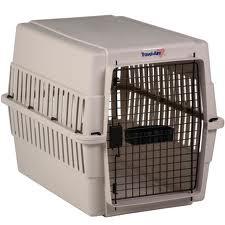 Plastic Travel Cages- These cages restrict some vision, are vented on the three sides that do not have doors, and are quite durable. They are relatively easy to clean, and are portable. They are surprisingly pricey. Many groomers use these types of cages for cage drying. They would be great if the top were vented and you could get air UNDER the pet. Some do have bottom grates, but they only elevate the dog enough to keep him out of urine. It’s not enough for good airflow. I own a couple of these. They are broken down and stored for occasional use, to ship a pet or extra cages if we are ultra busy. If you are going to have these, you might as well buy the modular unit, except that you can buy these one at a time, some are even designed on the tops and bottoms to stack.
Plastic Travel Cages- These cages restrict some vision, are vented on the three sides that do not have doors, and are quite durable. They are relatively easy to clean, and are portable. They are surprisingly pricey. Many groomers use these types of cages for cage drying. They would be great if the top were vented and you could get air UNDER the pet. Some do have bottom grates, but they only elevate the dog enough to keep him out of urine. It’s not enough for good airflow. I own a couple of these. They are broken down and stored for occasional use, to ship a pet or extra cages if we are ultra busy. If you are going to have these, you might as well buy the modular unit, except that you can buy these one at a time, some are even designed on the tops and bottoms to stack.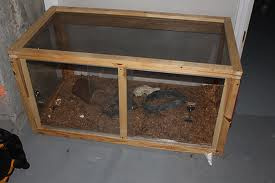
Homemade alternatives- A few groomers try to save themselves a few bucks by building cages themselves out of wood. These are scary, unsanitary, and dangerous. Something like this is okay, maybe, in a home environment, with the same animal, for temporary purposes…. but is just nasty for commercial application. And versions of these are limitless, only the person building it could plan the airflow of the cage. But, honestly, someone dumb enough to do this for a commercial application would probably not be smart enough to plan it effectively. I would have dogs free running around together (which can be dangerous) before I would ever put pets in something like this on grooming day.

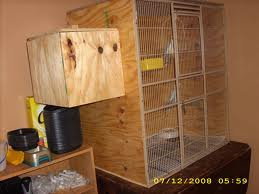
DRYERS
Unlike cages, which are built for one purpose, pet dryers are built differently for different purposes. Yes, of course the goal is to dry the pet, but different methods create the need for the mechanics of the dryer to change to make that method easier. Using a pet dryer for a method of drying to which it was not designed WILL harm a pet.
Cage hanger dryers have a motor, heat element, and a blower in a somewhat compact body made of metal or plastic with small hooks that give them the ability to hang on a cage or a door.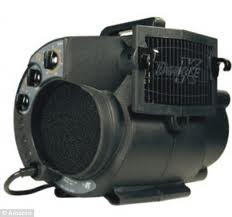 They will blow a large volume of heated air forward from where they are mounted. They are the quietest dryers; they produce a low rumbling sound that is mildly soothing. Most cage hanger dryers I have seen get VERY hot. Also, they have filters on the side that keep the hair that is flying around in the air from being sucked into the motor or heat element. If not cleaned constantly when they clog, they will cause the dryer to run even hotter and slower… A glorified toaster.The shop I worked at before I opened GroomingDales used them.Out of the 3 they had, in the 4 years I worked there, 2 of them actually caught on fire while being on a cage with a pet in it. They did have timers on them, but most of the staff just turned the timer up to full no matter what type of animal was in front of it. One of them smelled like burning hair all the time because the filters were just taken off instead of being cleaned when the dryer got so hot that the plastic casing was melting on the top of the airflow emitter. Those particular models did not have heat adjusters. After about 6 months of working there, I was afraid to touch them. Another problem with these types of dryers is the fact that on a medium size cage door, they cover 80% of it. If the pet is in any closed type cage, the hot air cannot escape it just gets hotter.
They will blow a large volume of heated air forward from where they are mounted. They are the quietest dryers; they produce a low rumbling sound that is mildly soothing. Most cage hanger dryers I have seen get VERY hot. Also, they have filters on the side that keep the hair that is flying around in the air from being sucked into the motor or heat element. If not cleaned constantly when they clog, they will cause the dryer to run even hotter and slower… A glorified toaster.The shop I worked at before I opened GroomingDales used them.Out of the 3 they had, in the 4 years I worked there, 2 of them actually caught on fire while being on a cage with a pet in it. They did have timers on them, but most of the staff just turned the timer up to full no matter what type of animal was in front of it. One of them smelled like burning hair all the time because the filters were just taken off instead of being cleaned when the dryer got so hot that the plastic casing was melting on the top of the airflow emitter. Those particular models did not have heat adjusters. After about 6 months of working there, I was afraid to touch them. Another problem with these types of dryers is the fact that on a medium size cage door, they cover 80% of it. If the pet is in any closed type cage, the hot air cannot escape it just gets hotter.
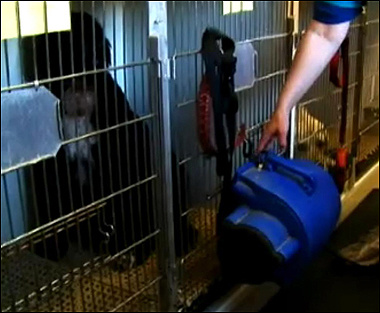
Stand dryers are designed for hand drying a pet by using directional airflow and high heat. Stand dryers have a motor and heat element that shoot the air down a tube with a rubber direction-controlling nozzle. They are louder than cage hangers, and make a whirring sound that you can hear speed up and slow when turned on and off.
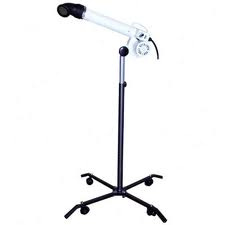
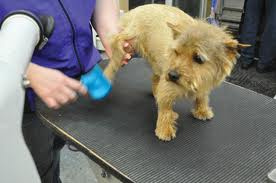
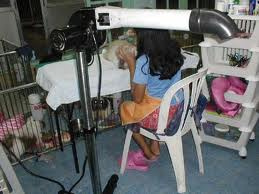
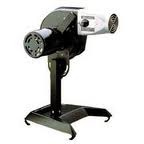

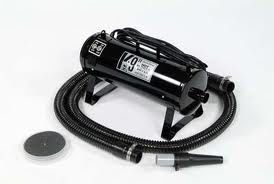 Forced Air Dryers are tanks that have one or more motors that have SERIOUS rpm like that of a vacuum,and blasts the air down a flexible tube with attachments that do various things like increase the air speed or hook on a cage or door.
Forced Air Dryers are tanks that have one or more motors that have SERIOUS rpm like that of a vacuum,and blasts the air down a flexible tube with attachments that do various things like increase the air speed or hook on a cage or door.
These dyers are also louder than other dryers and tend to have a high-pitched whine, that I believe reminds some pets of the vacuum cleaner, and scares them. They do not have heaters, they don’t need them, they get hot enough just from them running at such high speed that you will want to change your handholds frequently while using it. This is a one handed drier. The other hand is to comfort or control the pet.
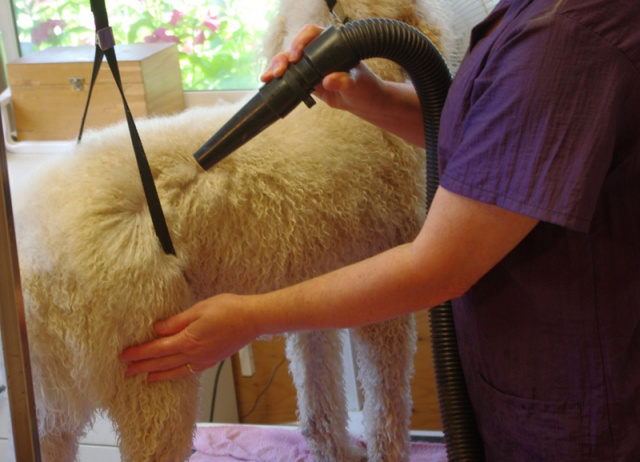
It is designed to force the hair straight by blowing on it hard (we’ve all used one of those super forceful hand dryers in a public restroom).
If held in one spot for a long enough amount of time, a pet could sustain a burn. Like the stand dryer, these dryers are intended for hand drying and to be kept moving while in use. The beauty of these dryers is that it is hard to use them any other way than to hold it in your hand. The danger these dryers pose is that they are designed to be able to handle the largest of dogs with the heaviest coats.
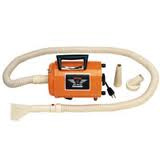
To use with smaller pets, cutting a motor or not using velocity-concentrating nozzles to reduce the forceful air velocity.You could potentially cause permanent hearing damage or internal injuries if used improperly. These dryers are the most “idiot proof” dryers I have found, especially if you are conscientious enough to use smaller ones with one motor for small pets and save the big ones with multiple motors for large dogs.
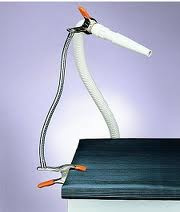 And then of course you have little inventions trying to make the force dryer a stand dryer, too… it’s not the same, there’s not enough heat and the hair is too forceful to get a brush under it. In my salon this clamp ended up being another way to turn a forced air dryer into a cage dryer. I threw them all in the dumpster.
And then of course you have little inventions trying to make the force dryer a stand dryer, too… it’s not the same, there’s not enough heat and the hair is too forceful to get a brush under it. In my salon this clamp ended up being another way to turn a forced air dryer into a cage dryer. I threw them all in the dumpster.
Fan type dryers can help move air around a pet that is waiting his turn to be hand dried. A pet that has been toweled thoroughly and “force” blown for a couple of minutes to remove the heavy water that is dripping, can partially dry while laying comfortably in a cage (or rolling around on a dry towel enjoying drying themselves, some dogs LOVE doing this). These blowers depend on the room temperature being slightly higher (say 72 degrees Fahrenheit or higher). Which is often the case in drying areas in grooming salons, the dryers that do generate heat usually increase the warmth of the entire room during the day.
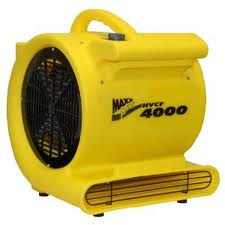
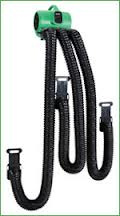
Also the humidity that is created by blowing fur dry also contributes to the room feeling warmer. They basically take the air in the room and speed it up and blow on the animal. It is in my opinion that this is the only way to safely cage dry a pet.
These “harmless” blowers, however if left unattended blowing COLD air on a wet pet can instantly become dangerous as it can bring a pet’s body temperatures down to dangerously hypothermic levels if, for instance, the blower was drawing air from an air conditioning vent near by, or because the window is open on a 60 degree spring or fall day. Cats are especially susceptible to becoming cold from a blower. We use the floor dryer type with hoses at my salon, positioned on the top of our modular cage bank to draw the warmest air in the room, away from any a/c vents. We only use them while the pets are waiting to be fully blown dry by hand, and NEVER use it on cats unless we use a forced air dryer aimed at the ceiling of the cage to add some warmth, never blowing directly on the cat. You can also use a heating pad under the cat, but then you have a wet pet sitting on an electrical appliance, not good.
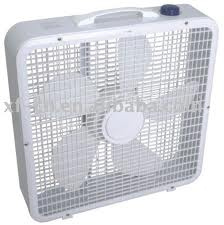
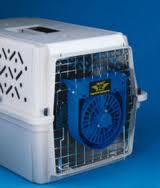
Homemade alternatives… Ey, I have heard of groomers using electric space heaters behind a fan, a Shop-Vac® that has had the hose positioning reversed for blowing. I have heard of groomers using leaf blowers and ceramic heaters. I have heard of clothes dryer vent hoses been aimed in cages. I have even seen a groomer cramming a regular human hand drier between the bent bars of a cage aimed on a small pet. So Stupid!
My Advice
When you take all the caging and drying options available to groomers into mind it is easy to see how many groomers fall into the mindset of “I’ll just stick a dryer on this one in the cage. He’ll be fine.” Next thing you know, it is a daily part of their assembly line technique! Many groomers will do just about anything to get the final product out in less time, for less money, so they can groom more pets. With out a conscientious person to say, “Whoa, you can’t do that” those groomers may find themselves plastered all over Internet as being a torturous murderer. The fact that they have successfully groomed and maintained happy relationships with hundreds, if not thousands of pets goes right out the window.
This may sound harsh, but if you are a groomer and are still routinely cage drying pets- You are grooming too many animals or need another helper. Charge your customers more, if you need to. Most clients will also give you all the time you need to get the job done safely. The loss of one’s reputation, can lead to unemployment.
If you are a client that takes your pet to a grooming establishment that cage dries pets, change groomers. Even if you ask them not to cage dry your animal, there are no guarantees that you will be heard. Take your pet to a place that doesn't cage dry at all. No matter how much your pets like the person grooming them now. Your pets can make friends again. Never leave your pet with a lone groomer. Groomers that are alone WILL leave your pet alone at some point. Even if it's to go to the restroom. Groomers that groom out of their homes and lone groomers in vet clinics are not under anyone's watchful eye. The bigger the staff, the better. Do you want one pair of eyes on you pet or 10? A steady stream of customers is the sign of a thriving business and also adds more eyes and ears around when you are not.
Be willing to give a groomer the time they ask for to make a good experience for all the pets that they groom. An unnecessarily demanding client can fluster groomers and distract them from their duties. You may not be the one with a fried dog, for sure; but could be part of a string of things going wrong for a groomer, that can quickly land them in a very tragic situation. If a groomer requires more compensation for time spent, pay it. Those are the good ones! Don’t be afraid to tip, it is a small way to show your groomer that you appreciate your pet having such a great day at the salon!
Cage drying is a symptom of a financially starved and uncaring groomer. In the story I reference, all it would have taken would have been for someone to take 20-30 minutes to blow it dry, instead of putting a heater up against it and throwing a tarp over it. For the dog to not cry while it was baking is either a lie, or a sign of a very sweet pet that thought it was being helped. My heart goes out to the family that owned that pet. My salon has not been free of accident in 17 years, but I strive on a daily basis to maintain strict practices in humane treatment. And if I haven’t been clear… Cage drying is a serious No, No.
Trudie- Cocker Spaniel Burned to Death in a Drying Cage at the Groomers
WE WELCOME COMMENTS AND QUESTIONS!



